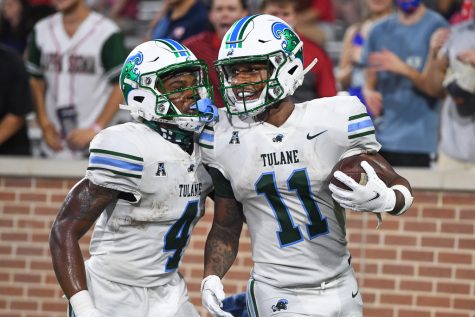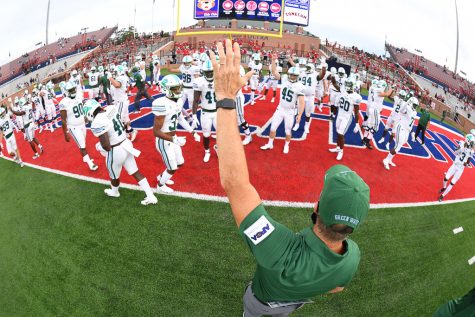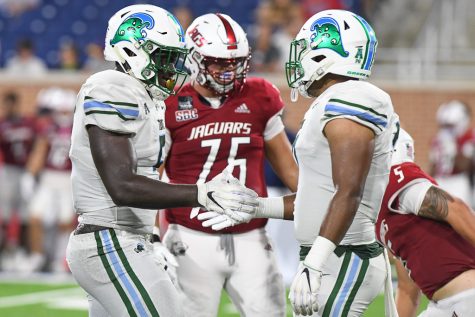Big Ten season reinstatement has far-reaching impact on college football
September 23, 2020
On Sept. 16, the Big Ten Conference, one of the top conferences in college athletics, reversed course and made the decision to play college football this fall. The conference’s teams could kick off their season on Oct. 23 and will play eight regular season games with each team playing in an additional champions week game on Dec. 19, which includes the Big Ten Championship.
This announcement comes after the Big Ten’s original decision to start their season this spring at the earliest, stating that the pandemic made competition too risky. After revisiting their original decision, all 14 of the Big Ten’s universities unanimously decided to play the season.
The Big Ten has been able to guarantee daily testing of its athletes and has developed screening protocols for virus-related heart ailments, conditions that were not well understood in August. Any player who tests positive will be ineligible to compete for 21 days, and teams are required to stop practice and games for at least a week if they record a positivity rate of over 5% over a seven-day rolling period. In addition, after testing positive, players must undergo a cardiac MRI exam and other heart-related screenings.
While the Big Ten insists that medical advice was the reason they reconsidered, other possible reasons include broadcasting contracts and political interference, with President Donald Trump claiming responsibility for bringing back Big Ten football.
Great News: BIG TEN FOOTBALL IS BACK. All teams to participate. Thank you to the players, coaches, parents, and all school representatives. Have a FANTASTIC SEASON! It is my great honor to have helped!!!
— Donald J. Trump (@realDonaldTrump) September 16, 2020
The Big Ten deciding to compete this season will undoubtedly have an impact on not only college football playoff odds but also college football as a whole.
Six Big Ten teams were ranked in the AP preseason poll: No. 2 Ohio State, No. 7 Penn State, No. 12 Wisconsin, No. 16 Michigan, No. 19 Minnesota and No. 24 Iowa. Because the Big Ten originally planned to begin play after the fall, however, all Big Ten teams fell out of the AP Top 25 poll the following week. This gave some college football programs the opportunity to be ranked when they otherwise might not have been. For example, the University of Louisiana at Lafayette made its first ever appearance in the AP Top 25 after upsetting Iowa State 31-14 to take the No. 19 spot. Big Ten teams will be featured in the AP Top 25 starting next week.
The Big Ten playing football in the fall will also have an impact on this season’s 40 scheduled bowl games. Now that the Big Ten is back, 90 teams are competing for 80 bowl spots. The minimum standards for bowl eligibility are a .500 record and six wins. With many teams playing shortened and/or conference-only schedules and the cancellation of several games due to COVID-19 restrictions, many teams will not meet these standards. A lot can change before December’s bowl season, especially if the 12-team Pac-12 conference also decides to play later this fall with teams such as University of Southern California and Oregon seeking to have successful seasons.



In the American Athletic Conference, three teams are currently ranked: No. 13 UCF, No. 14 Cincinnati and No. 17 Memphis. Tulane is currently unranked with a 1-1 record as the Green Wave prepares to face Southern Mississippi on the road. As of now, CBS Sports’ Jerry Palm predicts Tulane will face Syracuse in the Military Bowl. In order to either have a better shot at being bowl eligible or playing in a more prestigious bowl game, Tulane must win as many football games as they can while hoping the pool of potential bowl eligible teams stays small.









Tony McDougal • Sep 24, 2020 at 11:19 am
Really great job on this column! I was wondering what the hell was going on in the football world and this clearly laid it out for me. The fact that I get to read this for free is amazing lol 😉 I’d pay to read this guy’s stuff!